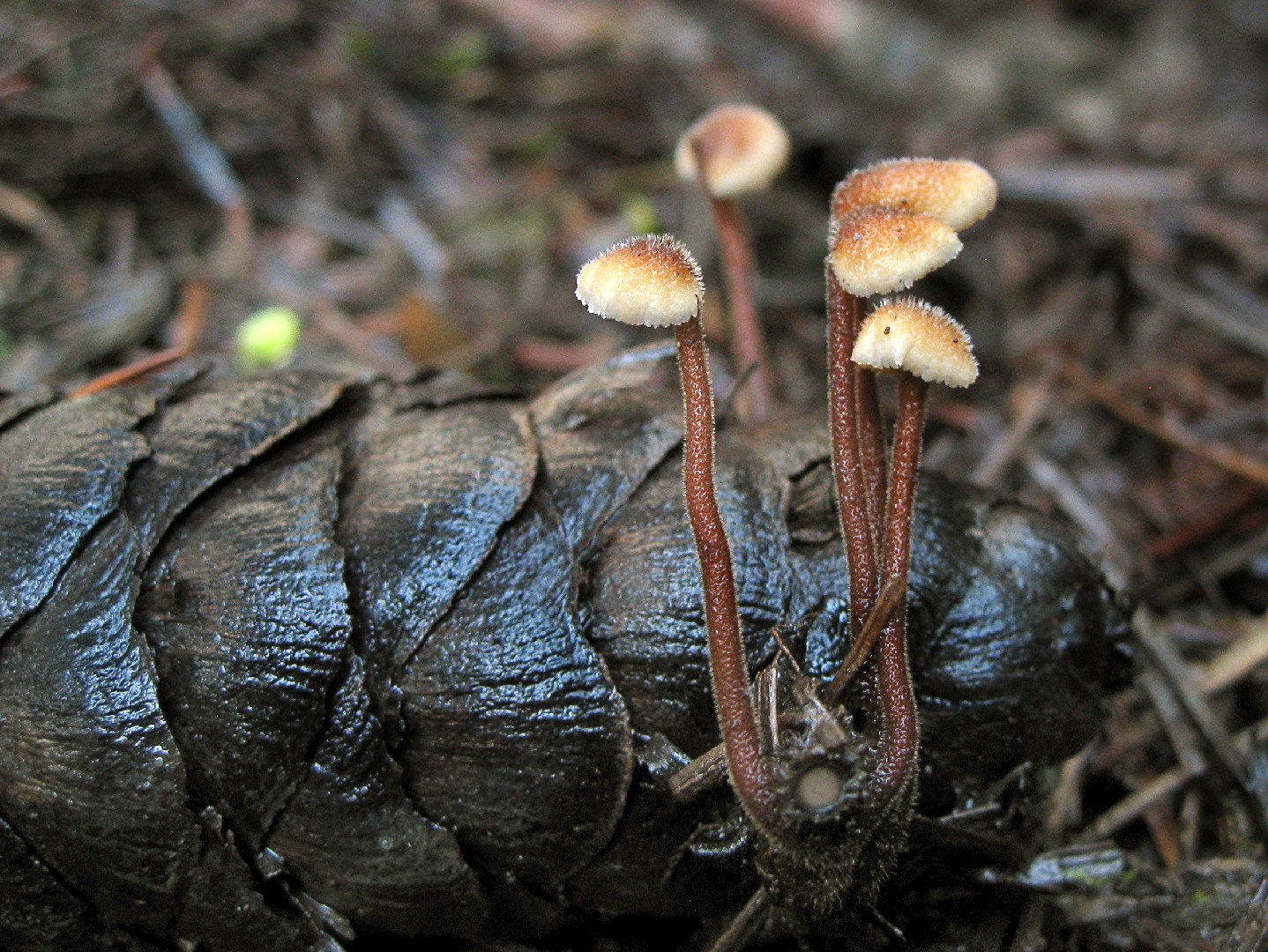Auriscalpium
Scientific name: Auriscalpium
Auriscalpium
Scientific name: Auriscalpium
 Photo By Jacob Kalichman (Pulk) , used under CC-BY-SA-3.0 /Cropped and compressed from original
Photo By Jacob Kalichman (Pulk) , used under CC-BY-SA-3.0 /Cropped and compressed from original Description
Auriscalpium is a fascinating group known for its unique appearance, often resembling tiny, dark-brown to black spiny seashells. These fungi typically grow on old pine cones, making them quite distinctive and easy to spot. One of the key traits is that their spore-producing structures are on the underside of the cap, consisting of tooth-like spines rather than gills. This group thrives in woodlands, contributing to the decomposition of pine cones and playing a role in nutrient cycling.
Species of Auriscalpium
Scientific Classification
Phylum
Club fungi Class
Mushroom-forming fungi Order
Russulales Family
Auriscalpiaceae Genus
Auriscalpium